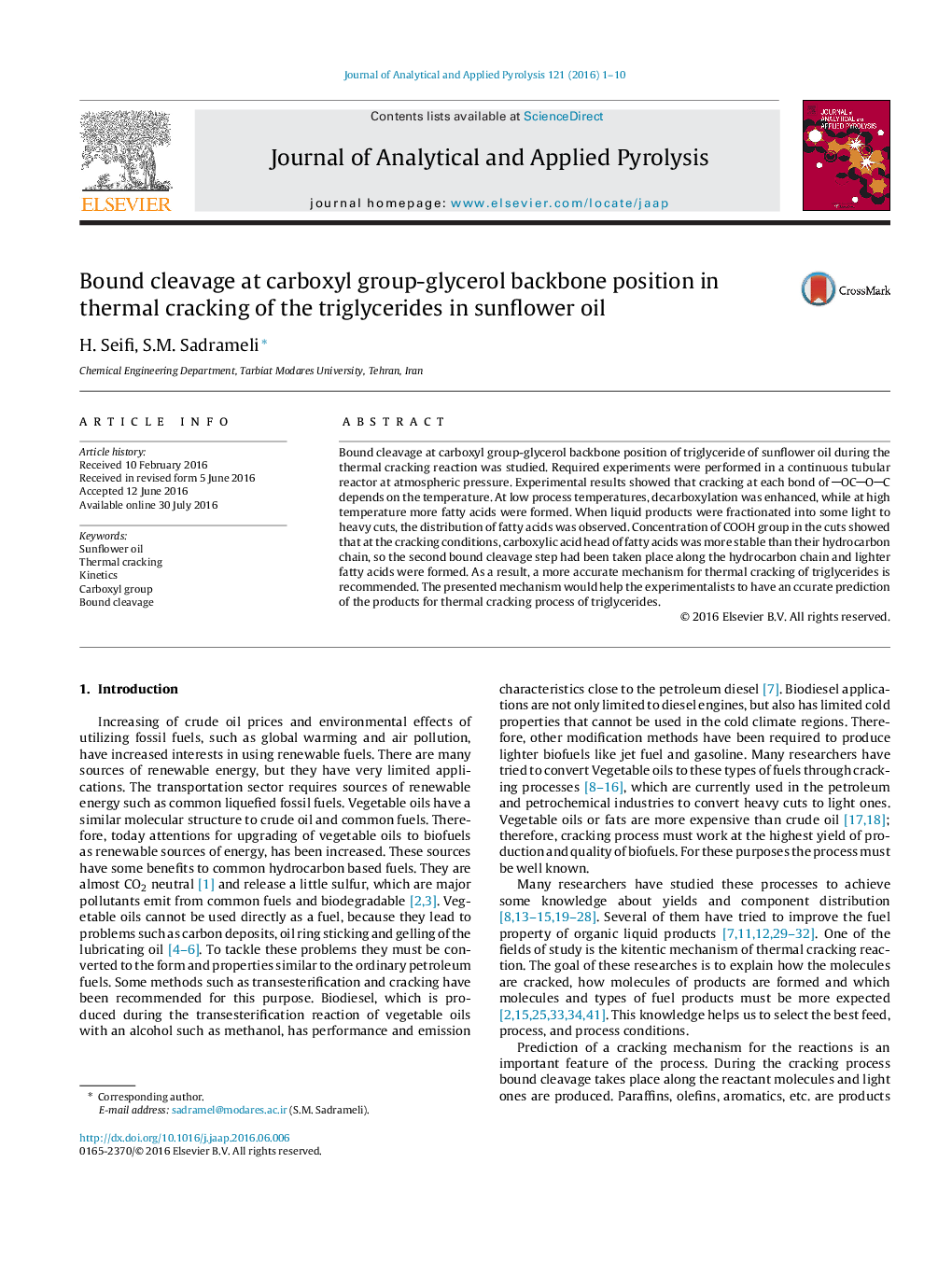| Article ID | Journal | Published Year | Pages | File Type |
|---|---|---|---|---|
| 5134701 | Journal of Analytical and Applied Pyrolysis | 2016 | 10 Pages |
â¢Sunflower oil was thermally cracked in a tubular reactor at atmospheric pressure.â¢Bound cleavage of carboxyl group-glycerol in sunflower oil was studied.â¢The results showed that cracking at each bond of OCOC depends on the temperature.â¢Low process temperatures tended to decarboxylation, while high temperature produces more fatty acids.â¢A more accurate mechanism for thermal cracking of triglycerides was recommended.
Bound cleavage at carboxyl group-glycerol backbone position of triglyceride of sunflower oil during the thermal cracking reaction was studied. Required experiments were performed in a continuous tubular reactor at atmospheric pressure. Experimental results showed that cracking at each bond of OCOC depends on the temperature. At low process temperatures, decarboxylation was enhanced, while at high temperature more fatty acids were formed. When liquid products were fractionated into some light to heavy cuts, the distribution of fatty acids was observed. Concentration of COOH group in the cuts showed that at the cracking conditions, carboxylic acid head of fatty acids was more stable than their hydrocarbon chain, so the second bound cleavage step had been taken place along the hydrocarbon chain and lighter fatty acids were formed. As a result, a more accurate mechanism for thermal cracking of triglycerides is recommended. The presented mechanism would help the experimentalists to have an ccurate prediction of the products for thermal cracking process of triglycerides.
